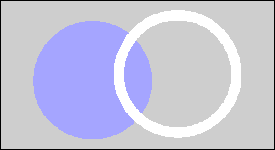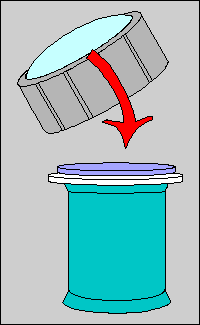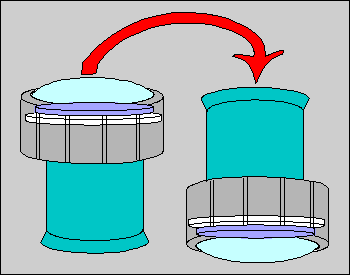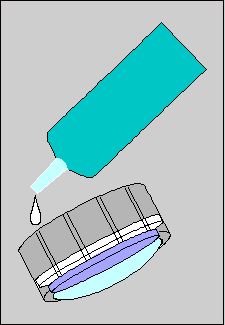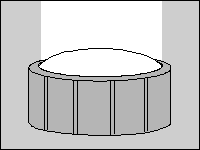Among other
nice things, my new microscope has a built-in halogen
illuminator with a variable brightness control. I like
that, partly because at full brightness, my home-made
dark-field stop for the 40x objective works consistently,
proving that I made it correctly and that my old
illuminator, aimed at the mirror, just couldn't deliver
enough light. Hurray for built-in halogen. But then I
noticed, as I dimmed the illumination, that the color of
the light became increasing "warm"— dim a
little bit, and it was yellowish; dim a lot, and it
became almost brownish. I removed the collecting lens
from the base of the scope and looked—there was no
blue filter in back of the collecting lens, as there is
in my old illuminator. Thus I knew what would solve my
problem. But if I put a blue filter in the filter holder,
where would I put the dark-field stop? I tried balancing
the filter on top of the collecting lens: yes, it changed
the yellowish light to white, but it tended to fall off
whenever I touched it, and I found myself clumsily
touching it whenever I adjusted the mechanical stage or
the iris diaphragm. Surely, I'd grow less clumsy with
practice, but having a filter balanced so insecurely
seemed kind of primitive.
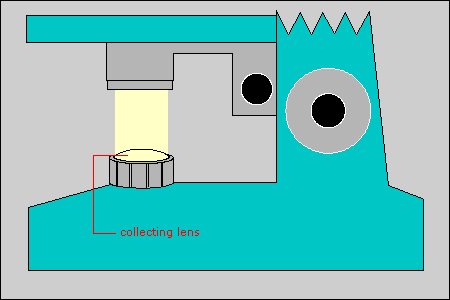 |

